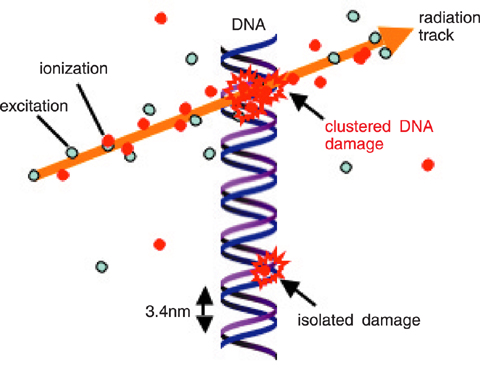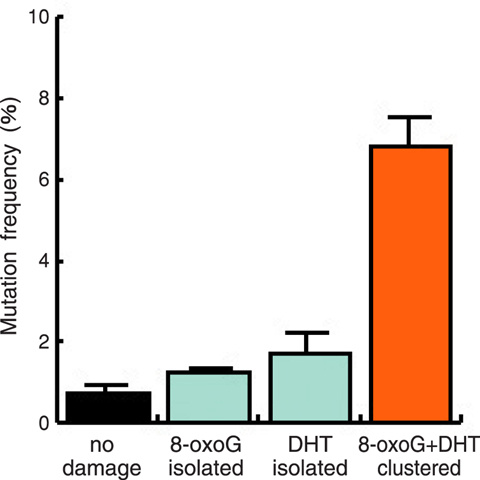
Fig.6-10 DNA damage by ionizing radiation

Fig.6-11 Induced mutation frequency by cluster DNA damage
Exposing cells to ionizing radiation leads to lethality, mutation induction, and carcinogenesis. These biological effects of radiation are considered to result from various chemical alterations (DNA damage) induced in DNA. Various types of DNA damage are induced by radiation, such as "base damage" where the base of DNA is damaged, "DNA strand break" where DNA helix is broken, and so on. On the other hand, it has been known for a long time that certain chemical agents generate same kind of DNA damage with those induced by radiation. However, it was pointed out that the biological effects of chemical agents are not as significant as those of ionizing radiation even when an equivalent number of lesions are induced. In order to explain this seemingly contradictory outcome, an idea of "clustered DNA damage" was proposed. Clustered DNA damage is a type of damage in which multiple DNA lesions are induced within a region of a few nm (Fig.6-10). It is assumed that dense ionization and excitation in or around the DNA caused by radiation leads to clustered DNA damage, and that, as a result of its low reparability, the biological effect of radiation becomes substantial. Although results indicating the presence of clustered DNA damage have been accumulated, there was no experimental evidence on whether clustered DNA damage is relevant to biological consequences. This was because it is difficult to relate the effect of clustering of damage with biological effects, as ionizing radiation induces various kinds and numbers of damage in DNA at random positions. In order to overcome this difficulty, we have devised and developed an experimental system using model cluster damage composed of several artificially-synthesized base lesions positioned at close proximity. With this method, it has become possible to examine the biological effects of defined types, numbers, and positions of damage. Our experiment reveals that the clustered DNA damage including two base lesions (8-oxo-7,8-dihydroguanine (8-oxoG) and dihydrothymine (DHT)) is more mutagenic than isolated lesions (Fig.6-11). It is experimentally demonstrated, for the first time, that base lesions at close proximity enhance the mutagenic potential. This result confirms the biological significance of clustered DNA damage and will provide important implications for the fields of biological application of radiation, such as risk assessment, radiotherapy of cancer, and mutation breeding.
<Previous: 6-4 | Next: 7 Nuclear Science and Engineering Research >